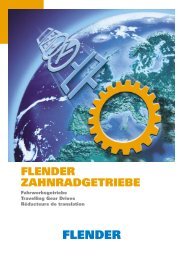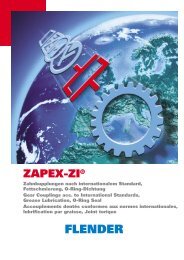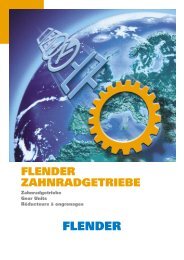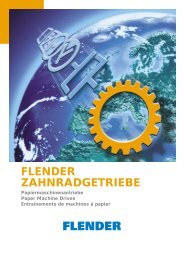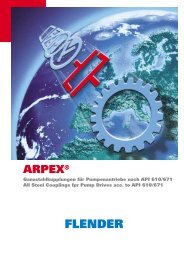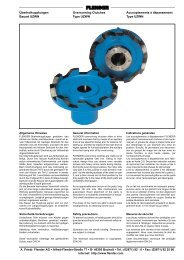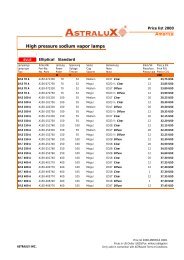fluid couplings - Laumayer
fluid couplings - Laumayer
fluid couplings - Laumayer
Create successful ePaper yourself
Turn your PDF publications into a flip-book with our unique Google optimized e-Paper software.
DESCRIPTION & OPERATING CONDITIONS<br />
1. DESCRIPTION<br />
The TRANSFLUID coupling (K series) is a constant filling type<br />
comprising three main elements:<br />
1 - driving impeller (pump) mounted on the input shaft.<br />
2 - driven impeller (turbine) mounted on the output shaft.<br />
3 - cover, flanged to the output impeller, with an oil-tight seal.<br />
The first two elements can work both as pump and/or turbine.<br />
2. OPERATING CONDITIONS<br />
The TRANSFLUID coupling is a hydrokinetic transmission. The<br />
impellers perform like a centrifugal pump and a hydraulic turbine.<br />
With an input drive to the pump (e.g. electric motor or Diesel<br />
engine) kinetic energy is imparted to the oil in the coupling. The<br />
oil moves by centrifugal force across the blades of the turbine<br />
towards the outside of the coupling.<br />
This absorbs the kynetic energy and develops a torque which is<br />
always equal to input torque thus causing rotation of the output<br />
shaft. The wear is practically zero since there are no mechanical<br />
connections.<br />
The efficiency is influenced only by the speed difference (slip)<br />
between pump and turbine.<br />
1 - INTERNAL IMPELLER<br />
2 - EXTERNAL IMPELLER<br />
3 - COVER<br />
4 - FLEX COUPLING<br />
2<br />
The slip is essential to the functioning of the coupling: there could<br />
not be torque transmission without slip! The formula for slip, from<br />
which the power loss can be deduced is as follows:<br />
slip % =<br />
input speed – output speed<br />
input speed<br />
x 100<br />
In normal conditions (standard duty), slip can vary from 1,5%<br />
(large power) to 6% (small power).<br />
TRANSFLUID <strong>couplings</strong> follow the laws of all centrifugal<br />
machines:<br />
1 - transmitted torque is proportional to the square of input<br />
speed;<br />
2 - transmitted power is proportional to the cube of input speed;<br />
3 - transmitted power is proportional to the fifth power of circuit<br />
outside diameter.



